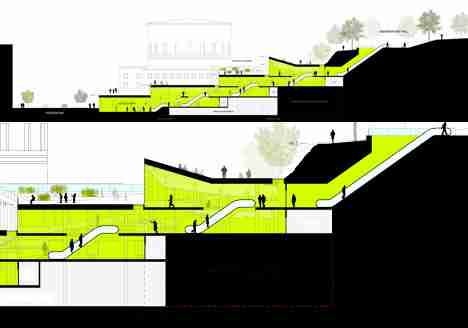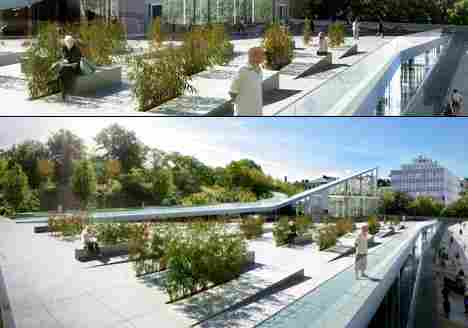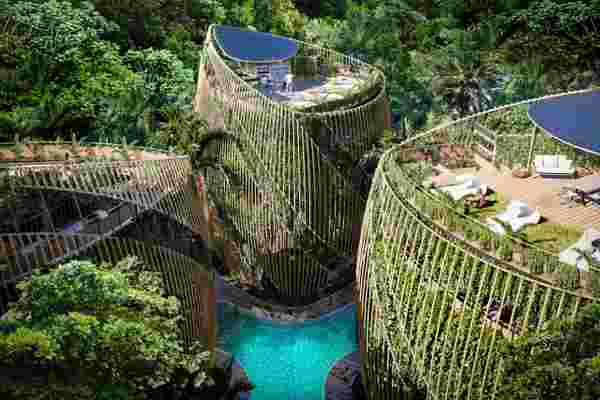
Goethe’s words “I call architecture frozen music” couldn’t ring more true for these 8 structural marvels. If architecture truly is frozen music, this article is a mixtape of 2020-21’s greatest hits.
A part of A’ Design Award and Competition ‘s winner list, these buildings are awarded for the uniqueness of the project, social impacts, environment friendliness, energy utilization, and other project-specific criteria. Ranging from conceptual designs to residential units, to spas, offices, museums, and retail spaces, the A’ Design Award covers architecture in its entirety, aside from a wide roster of other categories . Not only does winning an A’ Design Award look great on an architect’s resume, but it also brings a lot of repute and focus to the work, uplifting its value!
Architecture remains the most popular category at the A’ Design Awards, receiving entries by the thousands each year. Here are a few favorites that we wish we had enough money to afford!
The A’ Design Award is currently accepting entries for the 2022 edition of the award program, so go ahead and give your work and career the push it deserves!
If you’re an architect or spatial designer looking to participate in the A’ Design Awards this year, click here to register. Hurry! The regular deadline ends on September 30th, 2021.
Living The Noom by Sanzpont Arquitectura
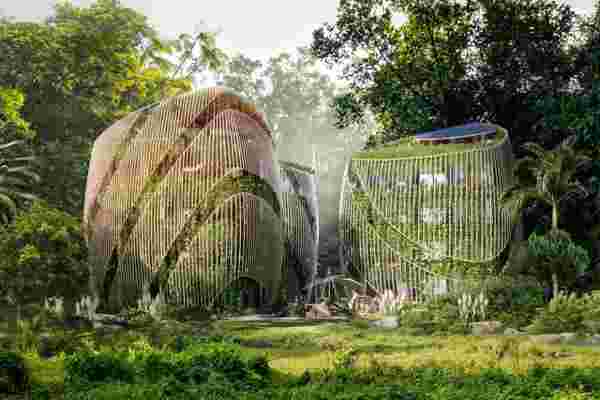
Flowers of Clouds Observation Tower by Vu Van Hai
Characterized by its rolling hills coated with pine trees, marigolds, and mimosa flowers, Da Lat is considered one of Vietnam’s most romantic cities. The Tower Flower, an observation tower molded into the shape of a flower in the early stages of blooming, sings an ode to those rolling hills of Da Lat with terrace gardens and biophilic design principles. Designed to be a coffee boutique bar as part of a larger resort complex, The Tower Flower’s spherical frame features facades that mimic flowers blooming with rich orange corten steel modules that form the structure’s large petals. Twisting throughout the building’s interior, a winding ramp emulates the flow and curve of a river to allow the surrounding landscape and interior garden to gradually appear to each guest and visitor. Inside the coffee boutique bar, visitors and residents can enjoy views of the surrounding landscape as well as the structure’s interior garden that pays tribute to the Lotus flower, the symbol for pure beauty in Buddhism.
Time Holiday Mobile Home by Chester Goh
Shenzhen Transsion Holdings Office by Aedas
The terms ‘natural’ and ‘boxy’ don’t often go together, except with buildings like the Shenzhen Transsion Holdings office, where they’re made to combine together in a nature-meets-architecture solution. The building’s rather template-ish skyscraper design is beautifully punctuated by greenery that creates a feeling of ‘openness’ within the confines of the architecture. These intermediate ‘open spaces’ create variety and interactions between the staff and offices, to demonstrate the corporate spirit of “co-operation and co-sharing” through symbolic architecture… I’d call it a rather literal interpretation of being in a ‘concrete jungle’!
Bayfront Pavilion by Thomas Schroepfer – AAL
The inspiration for the Bayfront Pavilion was the visually beautiful experience of walking under the foliage of lush trees in the tropics. This idea was translated into a design with a clear mathematical logic that was determined by extensive environmental simulations and structural optimizations, resulting in an artificial canopy that still felt natural as you walked underneath it. Light filtered through the canopy’s perforated design – a phenomenon the Japanese call Komorebi – and as the canopy cut out a major chunk of sunlight, the area underneath was naturally cooled by the shade. Located in Gardens by the Bay Singapore, the Bayfront Pavilion (also known as The Future of Us Pavilion) follows the tradition of architectural structures that evoke a dialogue with nature by blending an intricate form made of a perforated skin fluidly with the adjacent environments. For visitors, the building offers a climatically comfortable outdoor environment and a visual experience akin to walking under the foliage of lush tropical trees.
The Rossmore Residential Multi-Unit by Artur Nesterenko and Amr Samaha
A beautiful interpretation of art-deco architecture, the Rossmore residential building turns concrete into fabric with how it curves, almost like the curtains seen in theaters. The concrete pillars curve and pleat as they travel downwards, mimicking fabric curtains seen in grand halls built during the art-deco era. “The Rossmore is set to utilize high-performance concrete cladding panels with sculptural elements for the facades while being one of the first massive timber mid-high-rise apartment buildings in Los Angeles”, say the designers.
Nudibranch Hotel and Resort by SpActrum
Inspired by shellfish, the Nudibranch hotel comes with an instantly recognizable shell-like facade, and has ‘tentacles’ that stretch out in different directions, creating a piece of architecture that looks absolutely mesmerizing from any angle. Named after the nudibranch, a type of mollusk, the hotel stands as a wonderful example of nature-inspired design. The ‘shell’ of the hotel forms its main building, while the rest of its body surrounds the shell, forming lawns and pathways above the sandy coast of the beach. The tentacles (which aren’t visible in the above image) are actually covered pathways that connect the ground to restaurants and bars, and the spa and swimming pool to the main hotel itself.
Solar Veloroute Photovoltaic Pathway by Peter Kuczia
Bike roads, also known as Veloroutes are steadily becoming city staples, even mainstays for commuters on foot or bike. With the demand for Veloroutes increasing, Kuczia created a Solar Veloroute that comprises a photovoltaic tunnel structure that serves as a solar canopy for cyclists and pedestrians as well as a public facility where commuters can enjoy lit pathways at night and charging stations for bicycles or smartphones. Solar Veloroute presents as a partly-enclosed, rounded archway constructed from overlaid non-reflective glass-glass solar panels, which are attached to round tube steel purlins. While the Solar Veloroute collects solar energy during the day for on-site charging stations and lighting, the surplus energy collected can be distributed and used for additional services. On the structure’s sustainably sourced power, Kuczia says, “Just one kilometer of [Solar Veloroute] could provide around 2,000 MWh of electricity and could power 750 households or provide electricity for more than 1,000 electric cars driving 11,000 km per year.”
If you’re an architect or spatial designer looking to participate in the A’ Design Awards this year, click here to register. Hurry! The regular deadline ends on September 30th, 2021.
These Igloos designs for penguins rebuild polar ice caps to help fight the threat of global warming!
{"title":"Penguins protection system, #Antarctica designed by Sajjad Navidi","author_name":"Amazing Architecture","author_url":"https://www.youtubeom/channel/UCpMkB-q25WGDy7jr8g6PYAA","type":"video","height":"591","width":"1050","version":"1.0","provider_name":"YouTube","provider_url":"https://www.youtubeom/","thumbnail_height":"360","thumbnail_width":"480","thumbnail_url":"https://i.ytimgom/vi/9lg9ZYHmGXM/hqdefault.jpg","html":"<iframe width="1050" height="591" src="https://www.youtubeom/embed/9lg9ZYHmGXM?feature=oembed" frameborder="0" allow="accelerometer; autoplay; clipboard-write; encrypted-media; gyroscope; picture-in-picture" allowfullscreen></iframe>","arve_cachetime":"2021-03-05 09:04:04","arve_url":"https://youtu.be/9lg9ZYHmGXM","arve_srcset":"https://i.ytimgom/vi/9lg9ZYHmGXM/mqdefault.jpg 320w, https://i.ytimgom/vi/9lg9ZYHmGXM/hqdefault.jpg 480w, https://i.ytimgom/vi/9lg9ZYHmGXM/sddefault.jpg 640w, https://i.ytimgom/vi/9lg9ZYHmGXM/maxresdefault.jpg 1280w"}
Several human activities are to blame for today’s climate crisis , including the burning of fossil fuels which release large amounts of harmful air pollutants, like carbon dioxide, into the atmosphere contributing to global warming . Due to an increase in greenhouse gas emissions from human activity, seawater temperatures are rising, and polar ice caps are melting. Animals such as Emperor penguins face a grim future since they rely on sea ice in the Arctic regions for everything from molting, to breeding, to feeding. Architect Sajjad Navidi is hoping that with his design for a penguin protection system, the tuxedo seabirds will dive into a better and cooler tomorrow.
Making it to the final round in the ‘Innovation for the Sea’ category for Fondation Jacques Rougerie’s biannual Architecture and Arts competition, Navidi’s design comprises two components: a warming above-ice igloo and an attached underwater cooling system. Inspired by social thermoregulation behavior like penguin huddles, for his structure, Navidi suggested that an igloo be positioned on top of a melting ice cap and that a cooling system, which generates power from a swinging pendulum, be attached beneath the ice cap in order to strengthen the ice cap’s frozen surface. Ideally, Navidi envisions the penguins huddling together in the igloo for warmth and to conserve energy. Underneath the igloo’s ice cap, a cooling system, inspired by sea sponges, generates its power from a swinging pendulum that moves with the ocean’s current. Each swinging pendulum operates on smart technology that processes which ice caps need cooling, so when cold air is needed elsewhere, the pendulums automatically detach from frozen ice caps and reattach to melting ice caps.
For many of us, the closest we’ll ever get to the arctic regions is a Coca-Cola animated commercial that guilts viewers into saving the polar bears – it’s generally unknown territory. Designs like Sajjad Navidi’s make clever use of both smart technology and scientific research, but the arctic’s unique problem might also shed light on the bounds of design. For instance, the threat of producing too much ice could push penguins further and further away from the open waters, away from their only source of food. With penguins already adapting to human-induced global warming, further human interference could create more confusion amongst the arctic dwellers. Sometimes, specifically when it comes to fighting climate change, less really is more.
Designer: Sajjad Navidi
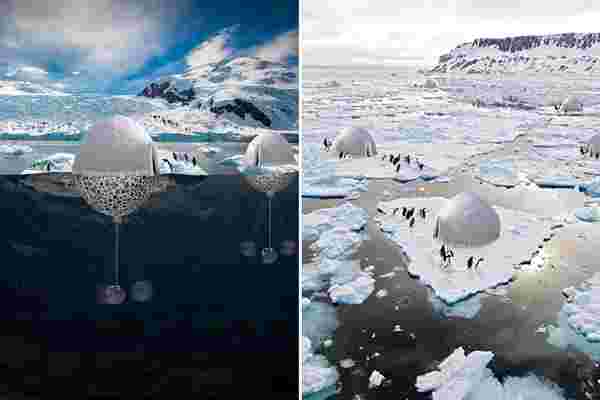
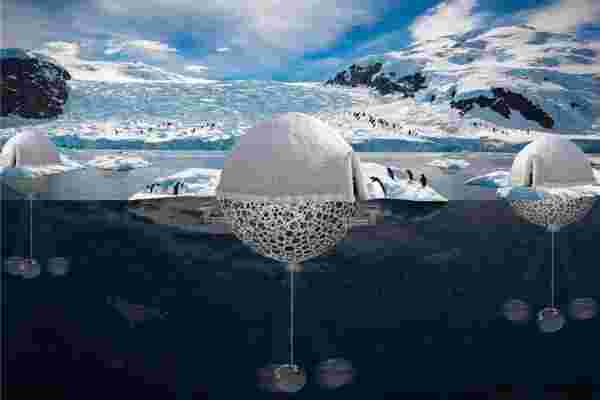
The View from Book Hill
Welcome to a proposed extension of the Stockholm Public Library. This project, called “The Book Hill” is one that makes use of what were thought to be limitations in the landscape to create a building that not only holds books, but acts as a landmark for the city. These limits include the Observatory Hill that sits next to the site; giant, beautiful, too steep to be useful, and the library in place; the Asplund library, with its three detached annexes that separate the library into four.
The solution is a snake. A “continuous boulevard” from street level to Observatory Hill top. The most obvious perk of which is the glorious view of the city, not normally accessible without hovercraft or helicopter.
Books? The fiction section will remain in the Asplund Library, while the sciences will run in one continuous “string of pearls” in order from bottom to top along the “Media Boulevard.”
All this intersected by The Short Cut. An axis which acts as an access, the main entrance which exits into the Observatory Hill.
Designers: Jan Yoshiyuki Tanaka & Jakob Steen Christensen of JAJA Architects
